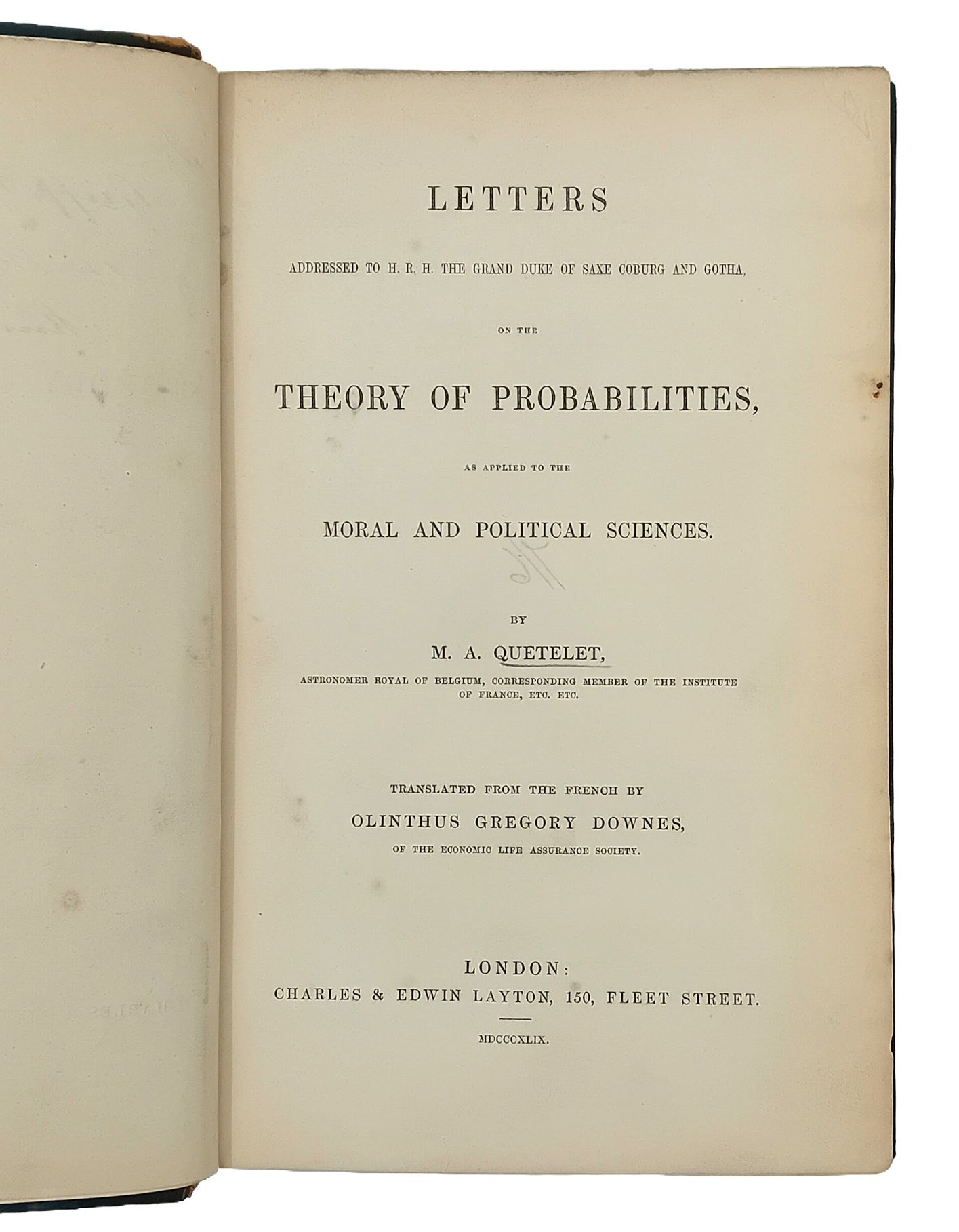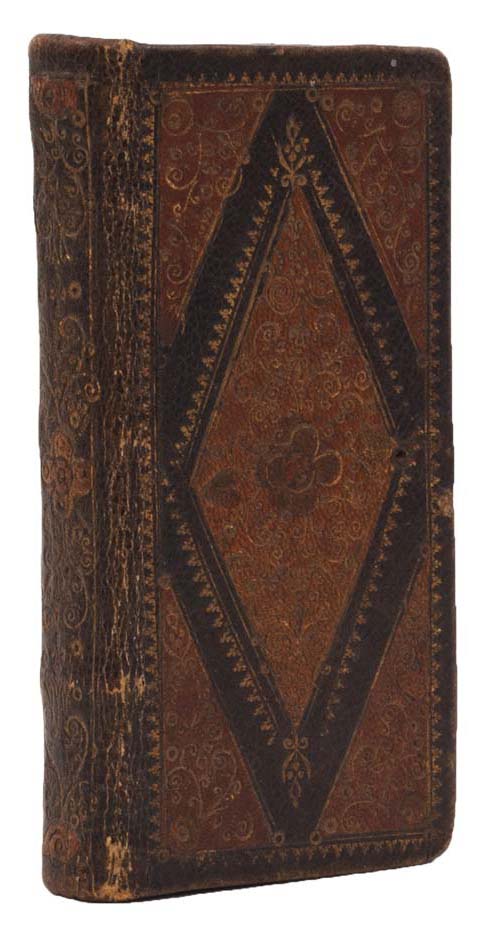

QUETELET, M. A.
Letters Addressed to H. R. H. the Grand Duke of Saxe Coburg and Gotha on the Theory of Probabilities, as Applied to the Moral and Political Sciences. Translated from the French by Olinthus Gregory Downes.
London, Charles & Edwin Layton, 1849.
8vo, pp. xvi, 309, [1]; a very good copy bound in quarter calf for the Institute of Civil Engineers, the Institute’s label on the front free end-paper; spine edges rubbed; translator’s presentation copy to Griffith Davies.

Added to your basket:
Letters Addressed to H. R. H. the Grand Duke of Saxe Coburg and Gotha on the Theory of Probabilities, as Applied to the Moral and Political Sciences. Translated from the French by Olinthus Gregory Downes.
First edition in English. ‘This book is really an original, if elementary, treatise on probability and social statistics, written in the form of a series of letters to the Belgian king’s two nephews, Ernest (the duke to whom the book was dedicated) and Albert (who by 1846 was husband to Queen Victoria of Great Britain). Quetelet had tutored the two in the 1830s, and in writing his book as a series of letters he was adopting a form that had been used with great success by Euler in 1768, with Letters to a German Princess, a popular exposition of physical science’. Stigler, History of Statistics, p. 206.
‘Quetelet is credited with the first published visual images of normal and skewed probability distributions’ (J.L. Klein, Statistical Visions in Time: A History of Time Series Analysis, 1662–1938, 1997, p. 164).
‘In his autobiography Galton explains how he first encountered Quetelet’s statistical methods in 1863, two years before the publication of his first article on heredity. He had immediately been attracted to Quetelet’s examination of the ‘law of deviation from an average’, which he had discovered when reading the 1849 English translation of Quetelet’s 1846 book Lettres à Son Altesse Royale le Duc regnant de Saxe-Coburg et Gotha sur la théorie des probabilités, appliquée aux science morales et politiques... In his 1846 Lettres, Quetelet used [Laplace’s curve of ‘possible error’] to interpret anthropomorphic data, thus giving it a new methodological significance, as has been pointed out by Stigler. Quetelet used Laplace’s theorem to determine whether a series of real objects and not mere measures) could be considered homogeneous. Laplace’s theorem implied that a group of measures affected by the same major causes, and varying only in terms of many minor, accidental causes, should be distributed according to Gauss’ law. Quetelet’s innovation was to use the Gaussian distribution as a way of detecting groups of homogeneous objects. He thus made explicit what had previously been merely implicit in Laplace’s work: a Gaussian (or ‘normal’ distribution) is a necessary and sufficient condition of homogeneity. The Laplace-Gauss law thus left the arcane realm of the estimation of error (in the measurement of a given object) to become a tool for detecting homogeneity in groups of real objects. In particular, it became a method for identifying ‘populations’ as objective entities. If, for example, the chest size or stature of soldiers was approximately distributed according to Gauss’ law, this would indicate that it was a real population, within which variation was merely accidental. For Quetelet, a Gaussian distribution revealed both order in apparent chaos, and also an underlying ideal type that nature tries to attain, implying that variation has no real significance. This would also explain why Darwin, if he did read Quetelet, would hardly have been attracted by his concept of a ‘population’’ (Jean Gayon, Darwinism’s Struggle for Survival: Heredity and the Hypothesis of Natural Selection, tr. by Matthew Cobb, 1998, pp. 117–8).

